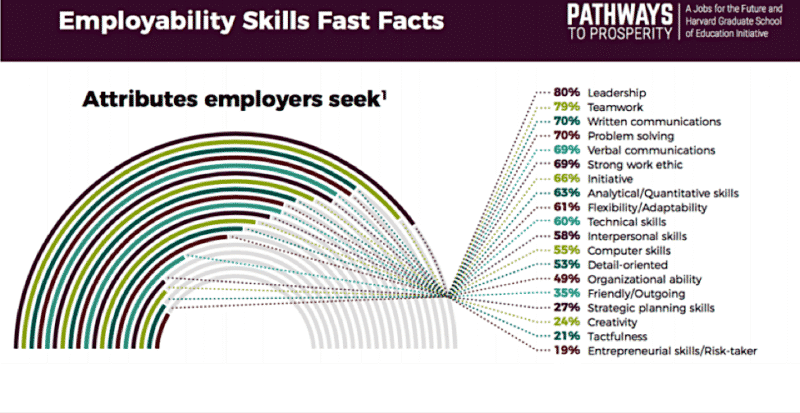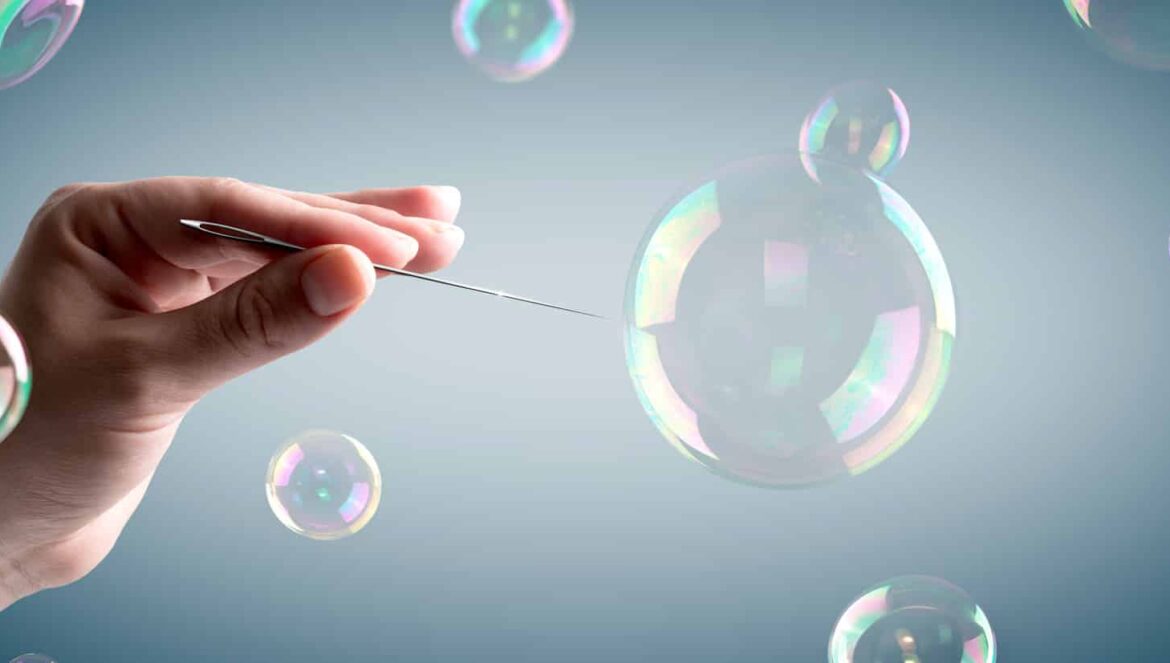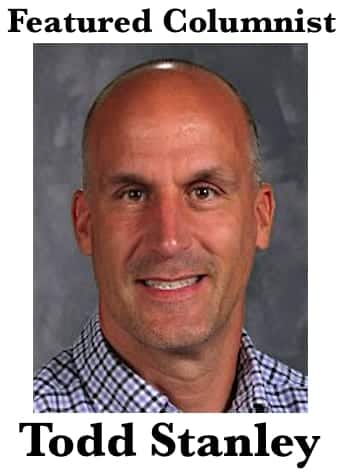 The basic definition of learning is the acquisition of knowledge or skills through experience, study, or being taught. But let’s face it. All learning is not the same. Think back to your own learning experiences. There are some moments that stand out from the rest as being a game changer or as being particularly meaningful. When you imagine these moments, what are you seeing? I can pretty much guarantee what you are not seeing. You are not remembering the time you were sitting there filling in a bubble sheet on a test or completing a worksheet. You are also probably not remembering reading a textbook or having a teaching lecture to you. The things you are most likely remembering are authentic learning. These are moments of learning where you make connections from the learning to the real world. The stronger you can make these connections to your own life, the more meaningful it will be for you. The more authentic the experience, the most significant the learning is going to be.
The basic definition of learning is the acquisition of knowledge or skills through experience, study, or being taught. But let’s face it. All learning is not the same. Think back to your own learning experiences. There are some moments that stand out from the rest as being a game changer or as being particularly meaningful. When you imagine these moments, what are you seeing? I can pretty much guarantee what you are not seeing. You are not remembering the time you were sitting there filling in a bubble sheet on a test or completing a worksheet. You are also probably not remembering reading a textbook or having a teaching lecture to you. The things you are most likely remembering are authentic learning. These are moments of learning where you make connections from the learning to the real world. The stronger you can make these connections to your own life, the more meaningful it will be for you. The more authentic the experience, the most significant the learning is going to be.
Here is the problem with today’s school system. They are not setting up a whole lot of authentic experiences. Instead, we teach students inside a bubble and do not make the connections that will make the learning more meaningful. Tony Wagner and Ted Dintersmith encapsulate the problem with schools very poignantly with an example. The example is learning to ride a bike. I remember learning to ride a bike most vividly even though it is an event that happened over thirty years ago. My dad sat me on the bike, encouraging me and letting me get my balance by holding onto it. Then all of a sudden, he shoved me down the road. I felt like I was going a hundred miles an hour, my dad getting smaller in the distance. There was no training wheels, no knee pads, no helmet to protect me. I either steered that bike correctly or I was going to be in a world of hurt. And guess what, I learned how to ride that bike. Guess what else. I have never forgotten how to ride that bike. It was an enduring lesson for me, transcending the moment and providing me with a lifetime authentic lesson.
Wagner and Dintersmith provide an example of what learning to ride a bike would look like in the traditional United States school system. It would start by students learning all of the parts of the bike. I’m not sure how useful that information has ever been to me in my bike riding history, but from there, they might learn the history of bikes, learn the physics of how the gears and chain work to propel the bike, might watch other people riding a bike, and test the effectiveness of various bikes. In no part of this learning would anyone actually be riding a bike, experiencing that authentic lesson. We would then send these students out into the world with all the confidence that what we have taught them will enable them to ride a bike on their own. Of course, many of these students will fail. They will fall off the bike, not know how to keep their balance, or not even be able to get onto one. But enough of them will figure it out for themselves that we will deem or educational system a success, ignoring the fact that these students would have been successful no matter what.
 When I walk into classrooms, I see a lot of teachers telling kids how to ride a bike or expecting them to know without providing them with the authentic experience. Rarely do I see a teacher authentically allowing kids to learn to ride a bike. Why are these authentic experiences so valuable? Because in them, students are learning how to learn. You show a kid how to do that and he can learn almost anything he wants. You continue to show him diagrams, ask him to memorize facts, and hand him all of the resources; he will continue to depend upon that method in order to learn anything.
When I walk into classrooms, I see a lot of teachers telling kids how to ride a bike or expecting them to know without providing them with the authentic experience. Rarely do I see a teacher authentically allowing kids to learn to ride a bike. Why are these authentic experiences so valuable? Because in them, students are learning how to learn. You show a kid how to do that and he can learn almost anything he wants. You continue to show him diagrams, ask him to memorize facts, and hand him all of the resources; he will continue to depend upon that method in order to learn anything.
A prime example of this is math. The way we teach math most times is the teacher demonstrates a problem on the board, the class works on the problem together to try to understand how the math concept works, and then they are provided practice problems to allow them to apply what they have learned. Rarely in this situation are students allowed to create math or to see how this math works authentically in the real world. Kids are learning math in a test tube and then we are shocked when they have difficulty using it in inventive ways. We haven’t been teaching it in inventive ways. Why on earth should we expect them to be able to use it in inventive ways?
Recently I have been reading the book Educated by Tara Westover. In the memoir, her family is deeply religious and anti-government, so the father does not believe in sending his children to school. The mother is supposed to be homeschooling them, but at best they look at an old textbook or use the computer that still has dial-up, to learn. However, Tara decides she wants to go to college like one of her older brothers did. The problem is she has to take the ACT and for all intents and purposes, she has not had much math. So what does she do? She teaches herself math. I remember reading this part thinking; there is no way this girl with no formal education, can teach herself math. And yet when she gets her scores back, the first formal test she has ever taken, she gets a 22. That is better than a lot of kids who have been going to school their entire lives. When she takes it again, she gets a 27, way better than I got.
It got me thinking, this girl teaching herself math was probably way more enduring than if she had sat in a classroom for years and been talked at so much that the rhetoric begins to sound like Charlie Brown’s teacher. And how many kids who have been exposed to an educational system for many years, would have the tenacity to sit down and teach themselves trigonometry like this girl did? And yet, she was faced with a problem; getting out of a life where the expectation would be for her to get married around 18 and then live in the same squalor and going nowhere existence. If she didn’t want this to be her life, she would need to do something different. That different was teaching herself math so she could go to college to try and find herself a better life. This was an authentic problem to her and one which inspired her to do something not a lot of kids could have done.
We have a lot of these authentic experiences in life that lead to epiphanies. One of the most life-changing things that happened to me was when I applied to graduate school to continue my creative writing pathway. I thought it was a sure thing and had even begun to look for an apartment for the next school year. Of course, I didn’t get in and ended up going back home and becoming a manager at the movie theatre I had worked at since I was 16. I learned something very valuable through this experience. I learned I did not want to be a movie theatre manager for the rest of my life. Instead, I applied to graduate school to be a teacher and the rest, as they say, is my history.
Normally, students do not have these authentic experiences in school that lead them down the path to what they were meant to be. However, as educators, we can simulate authentic experiences in the classroom. We do this by making things relevant for them. Nothing is worse than sitting in a class, learning something you have no idea why you are learning it. The essential question though is how do you provide authentic learning experiences that are relevant to students? By changing from the traditional style of teaching and learning to teach strategies that lend themselves to authentic experiences. These are things such as:
• Project-based learning
• Problem-based learning
• Case-based learning
You conduct these lessons while asking students to collaborate with others, also a very authentic experience, and have them present what they have learned to authentic audiences. You take the student out of the sterile environment of the classroom and actually provide them with authentic experiences. It is these authentic experiences that lead to enduring understanding and life-long learning. Knowledge and facts are easy things to forget. Skills learned through authentic learning are not. You might memorize the different parts of the bike, but eventually, you are going to forget some of them. However, if you experience actually riding a bike, you never forget how to do that. That is why they say, “it’s like riding a bike.” If you were using any one of these teaching methods, you would be actually riding the bike in order to learn how to ride a bike. And students would be learning how to do this on their own with guidance from the teacher. They would be learning for themselves which is the most powerful method of learning.
We as educators need to find better ways to engage students in authentic learning experiences. The main reason for this is that it is this enduring learning, the type that sticks with them, that really matters. Albert Einstein once said, “education is what remains after one has forgotten what one has learned in school.” If anyone would know this, it would be Albert Einstein. He hated school and was a consummate underachiever. It was the learning he did on his own, through the influence of a visiting scholar, Max Talmey, who attended weekly dinners with the Einstein’s, that gave the young boy the authentic experiences he would need to allow him to put forth his theories.
Why such learning is needed now more than ever is that the content we are teaching students, for the most part, is moot in the workplace. Employers are not looking for people who can conjugate a verb or knows the Pythagorean theorem. They are looking for people who can learn on the job, who can learn for themselves. They want to be able to put an employee in an authentic situation and have that person succeed. They do not want to have to lead them like many of our traditional classrooms are leading their students. The issue with a traditional education is that there are very few traditional jobs left. The top ten jobs right now did not exist ten years ago. If we prepare our students for the present, they are going to be left behind. We need to be preparing our students for the future. How do we do that? By instilling in them 21st century skills that will benefit them no matter what they are doing. 21st century skills such as:
• Collaboration
• Creativity
• Critical thinking
• Problem-solving
• Flexibility/Adaptability
• Information literacy
• Leadership
These are all skills that can be taught by using the authentic methods of project-based, problem-based, and case-based learning. These are also skills employers are looking for. According to Pathways for Prosperity, these are the attributes they are most looking for in potential employees:

Notice there are not many references to specific subject area or content.
As a teacher of history, I often say that if a student of mine forgets what the name of the twin rivers in Mesopotamia were called, they are going to get by just fine in life. If, however, I do not instill in them certain experiences and skills that will be instrumental in them being able to learn for themselves, then I have failed them as an educator. I want a student of mine to go in for an interview and knock it out of the park because I used a lot of public speaking in my classroom that they learned how to express themselves well, or because I instilled confidence in them to collaborate with others. I can only do this through authentic learning. If I can equip my students with such learning experiences, then that is my true success as an educator.
Author
Todd Stanley is the author of several education books including Project-Based Learning for Gifted Students and Performance-Based Assessment for 21st-Century Skills, both for Prufrock Press.
Additionally, he wrote a series of workbooks for them entitled 10 Performance-Based Projects for the ELA/Math/Science Classroom. He wrote Creating Life-Long Learners with Corwin Press and is a regular contributor of blogs to Corwin Connect which can be accessed at https://corwin-connect.com/author/toddstanley/.
You can find out more about Todd at MyEdExpert.com and you can follow him on Twitter.
Further Reading
- edCircuit – Todd Stanley Articles and Columns
- Gazette – 21st-century learning
- The New York Times – High School Doesn’t Have to Be Boring

